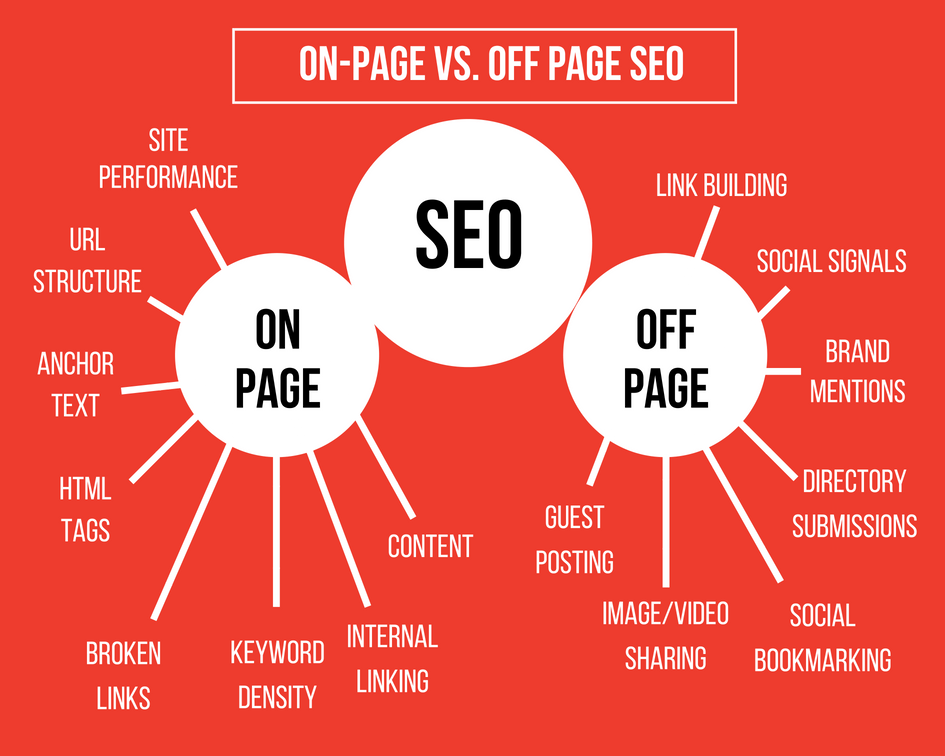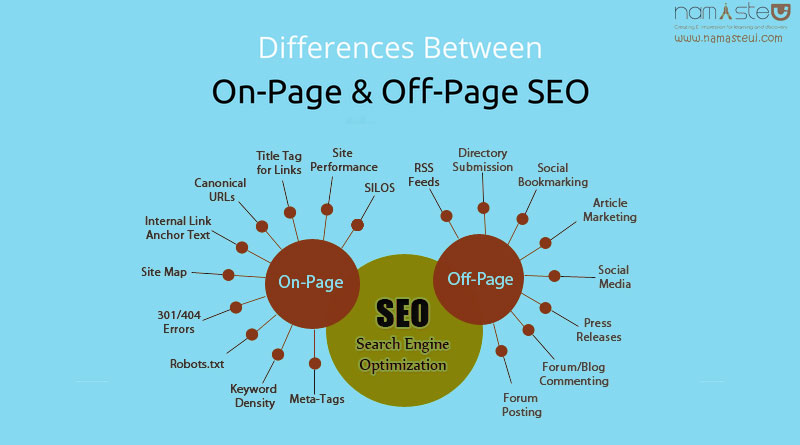Search Engine Optimization: A Guide to On-Page and Off-Page SEO
Understanding Search Engine Optimization
Search Engine Optimization, commonly known as SEO, involves implementing strategies to help websites and webpages rank higher in search engine results pages. With billions of webpages online today, SEO plays a crucial role in guiding people to the most relevant content. SEO focuses on two main areas - on-page optimization and off-page optimization. Both of these aspects work hand-in-hand to enhance search engine visibility. Let’s explore the key techniques involved in each.
Optimizing On-Page Factors
On-page optimization refers to tweaking elements directly on your webpage to help search engines understand what the page is about. Some important on-page optimization tactics include: Optimizing title tags and meta descriptions for targeted keywords helps search engines identify the topic of the page. The title tag appears at the top of search results to attract clicks, while the description provides a brief overview of the page content. Keyword research is essential to identify relevant longtail keywords like “benefits of digital marketing training for small businesses” that people are searching for but have low competition. Including these targeted keywords naturally in page content boosts rankings. Adding relevant internal links between pages on the same domain helps search engines crawl the site better and pass linkage value to important pages. Anchor text used in internal links should contain focused keywords. Proper use of heading tags, formatting text into paragraphs, bulleted or numbered lists makes content scannable and improves user experience, benefitting SEO.

Leveraging Off-Page Optimization Techniques
Off-page optimization involves activities outside your website to garner backlinks, social shares and increase brand awareness. Some effective off-page tactics are:
With increased focus on user experience and engagement, publishing insightful content on third-party websites and blogs is a great way to gain quality backlinks. Guest blogging helps position yourself as an industry expert while also passing link-juice to your money pages.
Promoting your content on social media platforms instills trust in search engines regarding popularity and authority. Platforms like LinkedIn, Facebook, and Twitter help expand reach and drive traffic. Consistent posting of unique updates is key.
Participating in relevant online communities and forums allows you to answer questions and start meaningful discussions while naturally incorporating links in a non-promotional manner. This improves CTR and trust with search engines.
Local business listings optimization helps rank for geo-targeted searches by business name, category, or products/services. Listing accurate information across directories like Google My Business, Bing Places, and Foursquare passes local indexing signals.
A combination of such on-page and off-page optimization techniques forms a robust SEO strategy delivering long-term results. Let’s explore specific tactics in more detail.
Mastering On-Page Optimization Factors
Proper on-page optimization establishes authority and relevancy of a webpage in the eyes of search engines. Here are some important on-page ranking factors to focus on:
Optimizing Page Titles
The page title appears at the top of browser tabs and serves as a first impression for searchers. It should succinctly describe the content in 55-60 characters maximum utilizing target keywords. For example, “Benefits of Digital Marketing Training for Small Business Owners”.
Writing Descriptive Meta Descriptions
The meta description provides a 150-160 character snippet preview displayed in search results. It should entice clicks by highlighting top benefits or calls-to-action. For example, “This guide discusses the top benefits small business owners can experience from digital marketing training like increased website traffic, sales and brand awareness.”
Structuring Content with Headers
Proper header structure balances key information hierarchy and readability. The most important headlines are in H1 format while subsequent subsections use H2, H3 and so on. Headers reinforce important topics making them intuitively scannable.
Optimizing Images and Videos
Images and videos make content more engaging but alt text and captions should include keywords for SEO value. File names, filenames and embedded text should also contain targeted phrases naturally without repeating words.
Internal Link Building
Internal links pass Link Juice within a site and signals topic relevancy to search engines. Anchor text in links should contain focused keywords rather than generic phrases like “click here”. Aim for natural placements within content flow over excessive linking.
Leveraging Key On-Page Ranking Factors
By addressing the above key on-page elements, search engines can better understand a page and match it to relevant queries. Paired with off-page optimization efforts, SEO rankings significantly improve over time.
Gaining Visibility through Off-Page Optimization
While on-page optimization establishes authority on the website, off-page factors raise overall domain visibility and trustworthiness in the eyes of search engines. Here are effective off-page tactics:
Building High-Quality Backlinks
Guest blogging remains the most powerful off-page tactic giving exposure to targeted anchors and passing link juice. Publishers prefer genuinely useful content over thinly-veiled ads. Developing relationships with key industry sites accelerates SEO results.
Optimizing Social Signals
Search engines value social mentions as an “Social Proof” of popularity and credibility. Posting engaging updates regularly across platforms like LinkedIn, Twitter, Facebook and niche forums drives organic traffic. Consistent participation builds an expert profile.
Getting Local Business Listings
Local SEO enhances discoverability for geo-intent queries through accurate listings across Google My Business, Bing Places, Apple Maps, Foursquare and Localeze. Regular updates of business info, photos and positive reviews strengthen local search rankings.
Answering Questions Online
Participating in knowledge sharing websites like Quora, Reddit and niche forums positions one as a thought leader. Providing helpful responses with quality backlinks naturally embedded aids off-page optimization. It also gives exposure to longtail search queries.
Broken Link Building
Contacting webmasters of sites linking to competitors with recently broken pages for a relevant guest post or resource pitch can help acquire those valuable incoming links. Domain authority passes through high-quality backlinks improving overall SEO rankings. A comprehensive on-page and off-page optimization strategy considering the above critical factors is necessary to see consistent search engine visibility and organic traffic increases over time. Monitoring performance through data and tweaking tactics accordingly ensure long-term SEO success.
Tracking and Improving SEO Effectiveness
Regular performance tracking through analytics and monitoring tools is essential to check strategy effectiveness and identify optimization opportunities. Here are some evaluation best practices:
Analyzing Search Console Data
Google Search Console provides actionable keyword ranking data showing page-wise ranked keywords and search volume drops. It surfaces technical issues like crawl errors requiring resolutions. Site migration impacts or algorithm updates are also visible.
Reviewing Analytics Insights
Google Analytics provides an organic search acquisition report listing top keywords and landing pages. Behavioral metrics like bounce rate, average session duration and goal completions on SERPs help assess user experience. It also surfaces entry and exit pages for optimizations.
Monitoring Competitor Analysis Tools
SemRush, Ahrefs or Majestic help analyze backlink profiles, keyword rankings, traffic and domain metrics of competitors. Identifying less optimized or over-optimized opportunities for target opportunities accelerates SEO. Regular track for latest inbound links flags partnership possibilities.
Investigating Technical SEO Issues
Tools like Screaming Frog, SEO Site Checkup surface technical errors like redirect chains, indexed but missing pages requiring a 404 page, pagination issues or canonicalization errors for resolutions. Mobile-friendliness and page speed metrics ensure ideal UX.
Implementing Improvements Incrementally
Gradually resolving issues and implementing enhancements through tracked and tested tactics prevents drastic fluctuations. Reviewing impact on a monthly or quarterly cadence establishes long-term SEO success through steady visibility and traffic gains. Data-backed decisions optimize efforts multi-fold.
Proper SEO planning, execution, monitoring and evaluations form the foundation for increased organic search visibility, qualified traffic and business goals accomplishment. A dedicated team ensures strategy consistency delivering proven long-term benefits.
